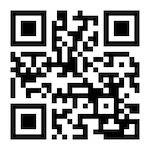GAD Knows Unattended Payment Acceptance
GAD has extensive experience with unattended solutions. We’ve grown our business selling and supporting payment acceptance, and coin changers for decades.
Now with Alio™ Pro, CPI presents an All-In-One cashless hardware solution for unattended payment. With a large touchscreen and customizable user interface, operators can create an engaging user experience. Plus, Alio™ Pro’s rugged outer-casing and protective Gorilla Glass protects hardware against vandalism and daily wear-and-tear. Alio™ Pro is supported by CPI’s cashless solution, including payment processing services and our cloud-based device management platform.
With a 4.3″ display, Alio™ Pro provides a fully interactive, large-format display, plus PIN-on-glass capability. Alio™ Pro is suited for use in multiple unattended payment applications, including:
- Off-Street Parking

- Retail Kiosk
- Laundry
- Carwash
- Metro and Train Fare Collection
- Vending
- Electric Vehicle Charging
Dimensions (mm)
-
H: 134mm W: 98mm D: 40mm Screen: 3.4″





